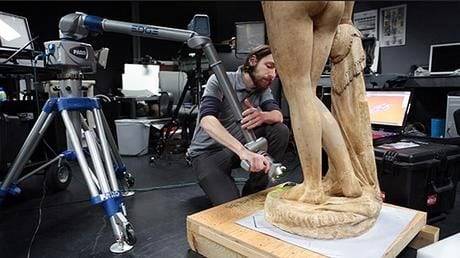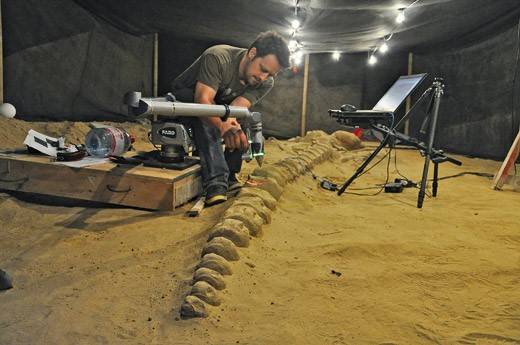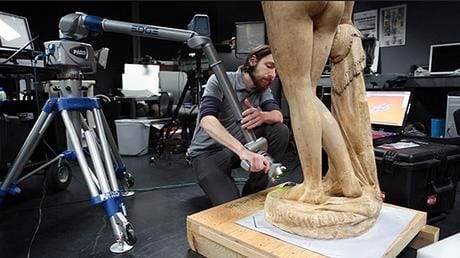Written by: Vincent Rossi Sr. 3D Program Officer, Digitization Program Office, Smithsonian Institution
For thousands of years and using a variety of tools, humans have been able to take point-to-point measurements to document, analyze, and understand their environment. It was not until recently that we’ve been able to collect thousands, millions and sometimes billions of measurement points to describe both the objects that surround us and our physical environment. Through leveraging tools such as laser arm scanners and long range laser scanners we are now able to capture museum objects—such as a skull—in three-dimensions with incredible fidelity. Once we collect the data we are able to deliver the content using our 3D viewer at 3d.si.edu, and we also make the data available for free to anyone to download so that a teacher or student can create a replica of available objects, such as Abraham Lincoln’s life mask, using a consumer grade 3D printer. More recently we are plugging Smithsonian 3D data into VR and AR systems so that regardless of your location on the planet you are able to view, interact, and enjoy Smithsonian collection objects or scientific research sites in a fully immersive environment.

In spring of 2015, the Smithsonian 3D team collaborated with the Smithsonian’s American Art Museum in 3D scanning Hiram Power’s model of the Greek Slave sculpture (1843). Using photogrammetry and the Faro laser arm scanner, Vincent Rossi and Jonathan Blundell scanned the object and delivered the data online using the Smithsonian 3D viewer. The team also created a 1:1 3D printed replica that was put on display at the Renwick Gallery. Now anyone with an internet connection can view and download the 3D scan data of the Greek Slave.

In 2011 the Smithsonian 3D team used the Faro laser arm and Faro Focus scanners to document a fossil whale site in the Atacama Desert in Chile. During road construction of the Pan-American Highway, construction crews uncovered dozens of fossil whale skeletons dating back to 5 million years in age. Road construction was paused so that the specimens could be safely extracted but the timeframe was extremely accelerated and the Smithsonian team only had 5 days to capture the environment and best-preserved specimens in 3D. Through 3D scanning technology, the 3D scans captured the fossils, contextual information, and environment. While the fossils were extracted from the ground and are now safely housed in the Chilean National Museum of Natural History, the site no longer exists other than in the 3D scan data that the Smithsonian team collected. This contextual information has proved invaluable for researchers at the Smithsonian’s National Museum of Natural History.

The Smithsonian has only scratched the surface with possibilities involving 3D capture and delivery. It is incredibly exciting to see what the future holds. Advancements in 3D capture technology could make it possible to automate our processes in order to scan entire collections instead of single objects thereby unlocking those collections for the entire world.
The Digitization Program Office is a central resource in the Smithsonian’s Office of the Chief Information Officer that works with all 19 Smithsonian museums and 9 research centers. Through hard work and a number of key partnerships in the technology sector, its 3D digitization program team of just five people has established the Smithsonian as a leader in 3D technologies for museums. With 154 million objects in the Smithsonian collection–and less than 1% that is ever on display–the Smithsonian has an amazing opportunity to leverage 3D scanning technology to make more of the collection available to anyone in the world who has an internet connection.
3D Digitization supports the Smithsonian’s goal of providing broad, universal access to our unparalleled resources. Digital collections turn the Smithsonian into a globally accessible resource platform that allows researchers to connect the dots and educators to spark learning, wherever they are.

